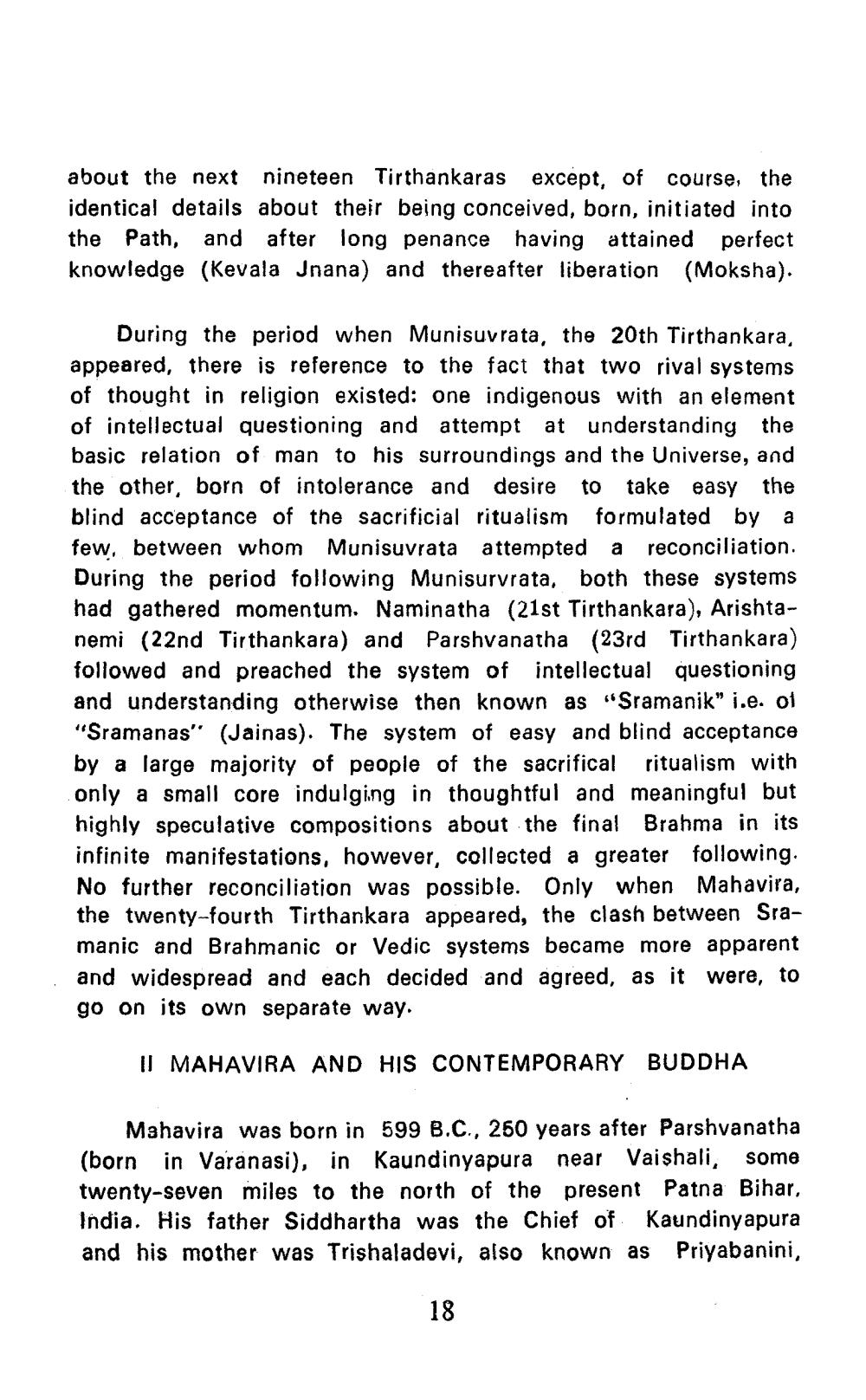________________
about the next nineteen Tirthankaras except, of course, the identical details about their being conceived, born, initiated into the Path, and after long penance having attained perfect knowledge (Kevala Jnana) and thereafter liberation (Moksha).
During the period when Munisuvrata, the 20th Tirthankara, appeared, there is reference to the fact that two rival systems of thought in religion existed: one indigenous with an element of intellectual questioning and attempt at understanding the basic relation of man to his surroundings and the Universe, and the other, born of intolerance and desire to take easy the blind acceptance of the sacrificial ritualism formulated by a few. between whom Munisuvrata attempted a reconciliation. During the period following Munisurvrata, both these systems had gathered momentum. Naminatha (21st Tirthankara), Arishtanemi (22nd Tirthankara) and Parshvanatha (23rd Tirthankara) followed and preached the system of intellectual questioning and understanding otherwise then known as "Sramanik" i.e. of "Sramanas" (Jainas). The system of easy and blind acceptance by a large majority of people of the sacrifical ritualism with only a small core indulging in thoughtful and meaningful but highly speculative compositions about the final Brahma in its infinite manifestations, however, collected a greater following. No further reconciliation was possible. Only when Mahavira, the twenty-fourth Tirthankara appeared, the clash between Sramanic and Brahmanic or Vedic systems became more apparent and widespread and each decided and agreed, as it were, to go on its own separate way.
IL MAHAVIRA AND HIS CONTEMPORARY BUDDHA
Mahavira was born in 599 B.C., 250 years after Parshvanatha (born in Varanasi), in Kaundinyapura near Vaishali, some twenty-seven miles to the north of the present Patna Bihar, India. His father Siddhartha was the Chief of Kaundinyapura and his mother was Trishaladevi, also known as Priyabanini,
18




